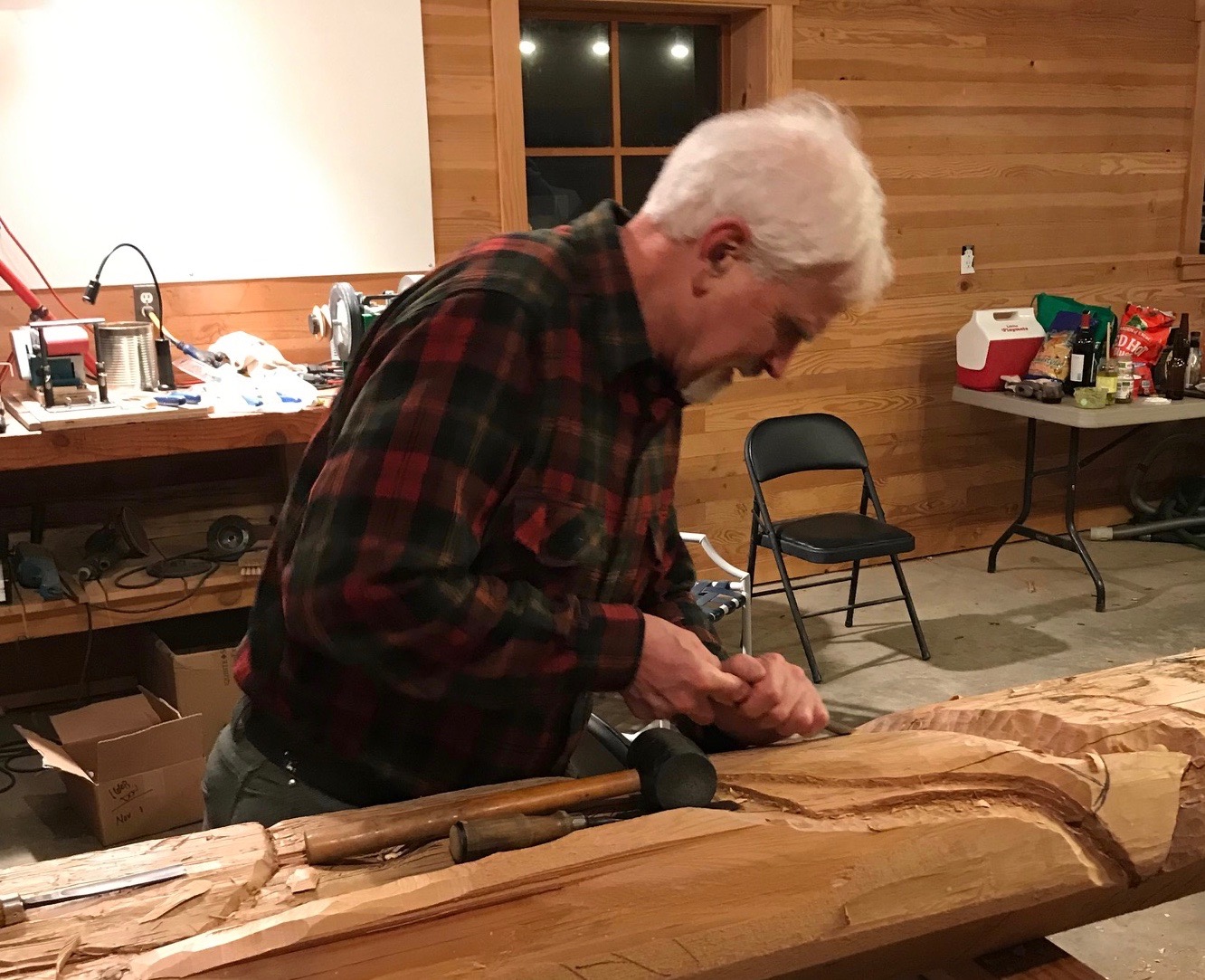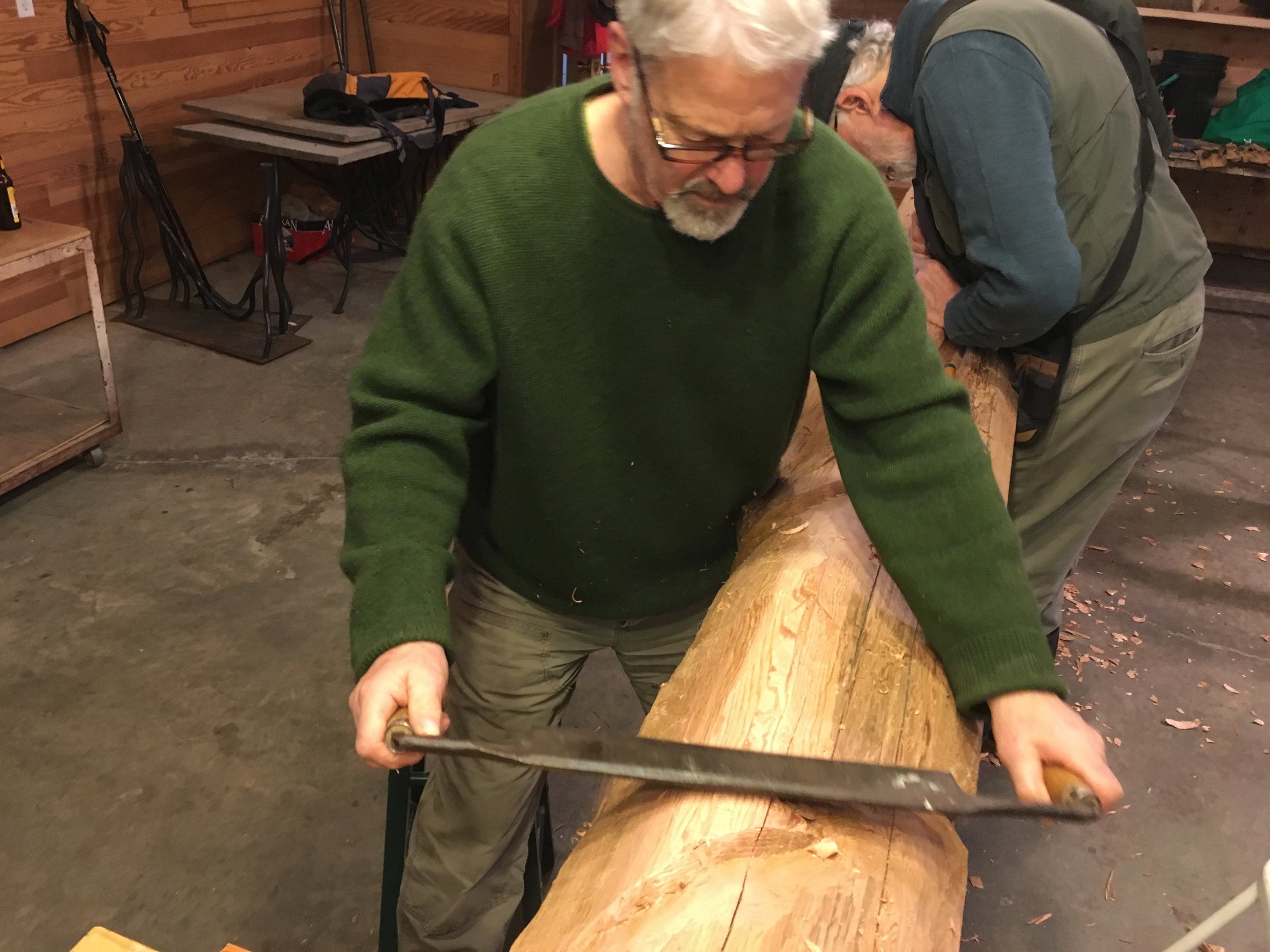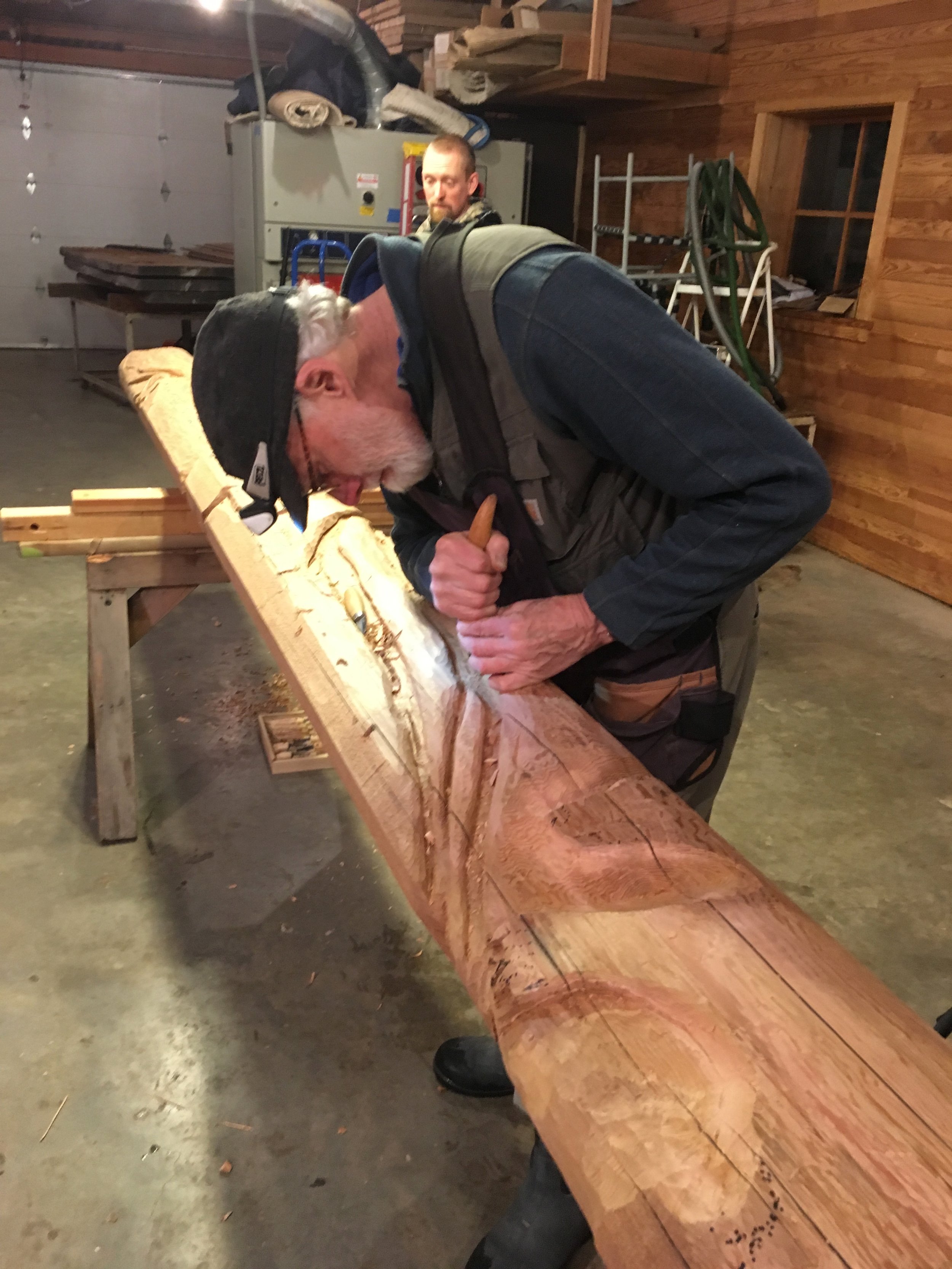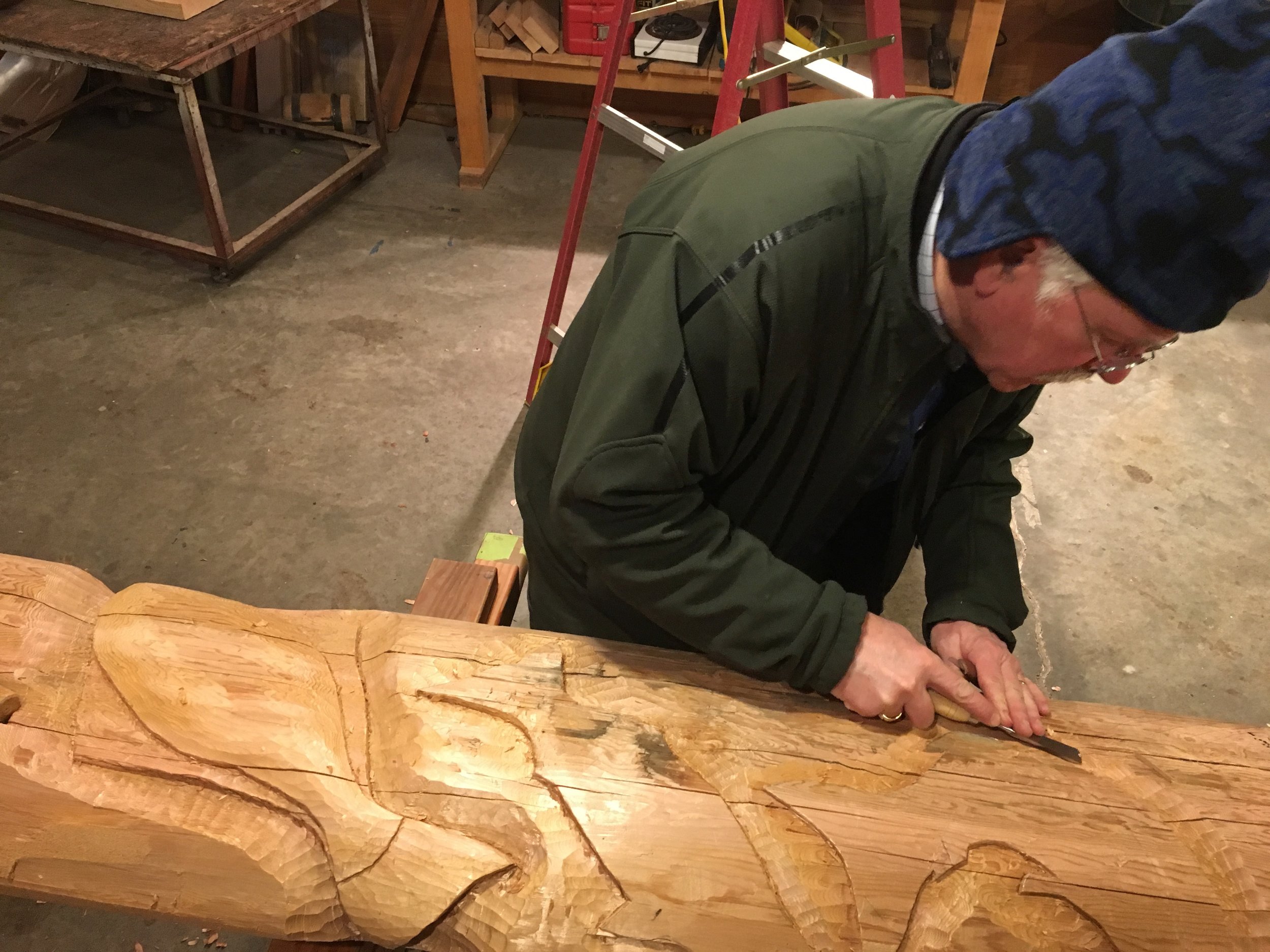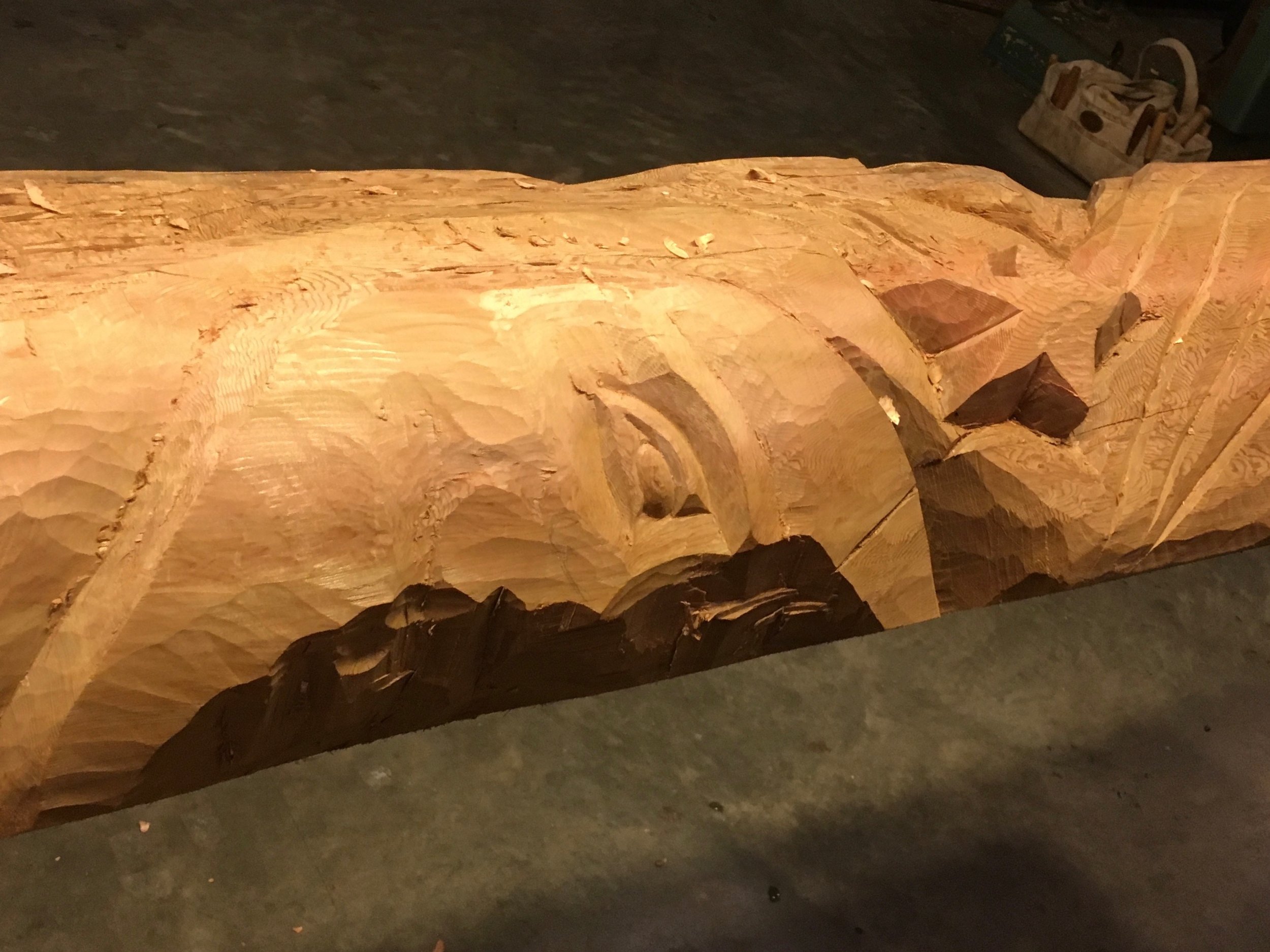We are several days into our kayak journey now, and the pace is slowing. We are finally getting here. As agreed, we have been paddling for an hour in silence, threading the island tapestry toward a seemingly impenetrable wall of ancient forest that looms ahead. Our group of twelve travellers, coming from all corners of the continent, have settled into a remarkably cohesive community in the few days we have been together. Now, as we round a bend into the estuary, almost miraculously, a gateway appears in the forest, and even the sweep and cadence of our paddles are laid to rest.
Only now does the full force of the silence truly descend on us. It is a potent presence, pouring into our senses as palpably as the tidal current that carries us into the gate of the forest. Early in the trip the silence had felt strange, a little disorienting. But as our days unfold, we are falling under its spell. There is a deep sense now of being held, both by the silence and by the flowing water, which grows even more luminous as our kayaks settle to the pace of the tide. Our gaze is drawn downward, beneath the surface, where schools of pink and chum salmon circle and scatter below our kayaks. The splash of leaping salmon echoes in the silence every few seconds. Each splash seems to linger in the air, almost as if a bell has been struck.
I smile to myself, thoughts circling and scattering like the salmon beneath me. It feels so right for me to be guiding this trip, here in this coastal wilderness of Southeast Alaska. For years I have fished these waters commercially for salmon and halibut. Now I am seeking to be here in a new way, a way that accords more closely with my Zen practice. I now invite people to this pristine wilderness to explore meditation, in a setting that adds a new dimension to the Buddhist notion of "Original Nature".
In unexpected ways my life has come full circle. My thoughts drift back in time to the early 1970's, when as a young theology student at Harvard Divinity School, I wrote a thesis paper entitled Wilderness as an Ethical and Spiritual Imperative. In it, I suggested that the ecological crisis is at root a spiritual crisis, and that our reigning belief systems are dangerously out of step with the way ecosystems actually work. It was a perspective conspicuously absent from theological education at the time, one which seems only now to be finding a voice in our established religious institutions. These days I have plenty of company in this conviction. Still, I wonder to myself where I would have gone with that thesis if I had known more about Buddhism then.
In retrospect, my ordination as a Protestant clergyman, and my brief career as a university chaplain, were an awkward and unsettled time for me. I was sincere enough in my aspiration to the ministry. I was definitely responding to a call. But I know now that the call was toward a different path. I was swimming against my own inner current, frustrated in my yearning for an Earth-honoring spiritual tradition.
A new commotion on the stream bank calls me back. Up ahead, where the estuary narrows, and the spawning salmon are concentrated in a large pool, a black bear has emerged from the forest. Oblivious to our presence in the silence, she plunges into the stream and quickly retreats with a ten pound chum salmon struggling in her jaw. Finding what she wants so easily, she withdraws back into the safety of the forest, carrying her lunch with her. She never saw us, or heard our astonished gasps. Soon we pass the spot where the bear snatched her meal. The surface of the pool is still roiling with hundreds of agitated salmon. I have seen this spectacle before, but rarely at such close range. I am wide awake now. This is closer than I like to come to a fellow predator who is clearly the one in charge here. I think of Daniel Goleman's observation that, through most of our evolution as a species, the big theological question has always been, "Do I eat it, or does it eat me?". At the moment the question feels uncomfortably relevant. Edging the group to the opposite side of the stream, I comment that, until the very recent past, this kind of wild encounter was a normal part of the experience of every human being, everywhere.
Further upstream the estuary widens again, and we breath a bit easier. Ancient moss-draped Sitka Spruce and hemlock trees give mute testimony to centuries of standing watch over this place. A pair of bald eagles, a family of mergansers and a flock of Canada geese all retreat deeper into the watershed as we approach. Where the geese had been, a dusting of goose down feathers float lightly on the water.
What we are seeing here is rapidly becoming, in Christina Desser's words, an "extinct experience". By driving this kind of wild nature to the far margins of our world, we have placed our own psychic lives on the endangered experience list. My evolution toward Buddhism has turned continually on this awareness. The tradition of my youth has offered scant protest or leadership as we consume and discard the biological bedrock of our own souls.
As a college student, working summers on a salmon seiner in Southeast Alaska, I stumbled on the writings of Gary Snyder and Thomas Merton, and my Christo-centric thinking took a hard turn toward the East. From Snyder, a poet and ecologist, I found the bridge between human nature and wild nature. From Merton, a Trappist monk, I caught the scent of something essential in the life of disciplined solitude. Both drew heavily upon Zen Buddhist thought and practice. Both recognized an ecological spirit at the heart of Buddhism.
To a degree that is unique, I believe, among world religions, Buddhism has from its inception incorporated a kind of Deep Ecological view of the nature of Self. The Thirteenth Century Zen Master Dogen, in his Mountains & Rivers Sutra, declared: It is not only that there is water in the world, but there is a world in water. It is not just in water. There is a world of sentient beings in clouds. There is a world of sentient beings in the air. There is a world of sentient beings in fire. . . there is a world of sentient beings in a blade of grass. (Gary Snyder, The Practice of the Wild)
Buddhism has long understood what we are only now learning in the West, that the self includes the entire material universe. The notion of a separate self is pure fiction, an invention of the human ego. As the Buddhist thinker Joanna Macy wrote in an essay, "The Greening of the Self":
"The conventional notion of the self with which we have been raised and to which we have been conditioned by mainstream culture is being undermined. What Alan Watts called 'the skin-encapsulated ego' and Gregory Bateson referred to as 'the epistemological error of Occidental civilization' is being unhinged, peeled off. It is being replaced by wider constructs of identity and self-interest; by what you might call the ecological self or the eco-self, co-extensive with other beings and the life of our planet. It is what I will call 'the greening of the self'." (Dharma Gaia, Parallax Press)
This "ecological self" fits seamlessly with what Buddhism has been teaching for 2,500 years. Paticca-samuppada (dependent co-arising), together with anicca (impermanence, ceaseless change), both core concepts in Buddhism, provide a perfect spiritual counterpart to the view of the universe now emerging from the ecological sciences. Albert Einstein declared that, "If there is any religion that would cope with modern scientific needs, it would be Buddhism.". Here, the world is seen, in Allan Hunt-Badiner's words, as "a massive interdependent, self-causing dynamic energy-event against a backdrop of ceaseless change". (Dharma Gaia).
In such a universe, how can we be "separate"? Where does "nature" leave off, and "I" begin? Wu Wei Wu put it bluntly when he asked, "Why are you unhappy? Because 99.9% of what you think, and everything you do, is for yourself. And there isn't one."
Western religious traditions are certainly not indifferent to this problem. In many ways they seek to mitigate our excessive preoccupation with the ego-based self. But in my view, they do not dig deeply enough to the core of the self and its delusions. The Judeo-Christian streams, for all their inherent beauty and depth, essentially leave intact a concept of the self as separate, an entity that stands apart from and above nature, that can somehow be "saved" or "lost" independent of its fellow creatures, independent of its total environment. They also substantially fail to disentangle themselves from the legacy of anthropocentrism, from a moral universe that Theodore Rosak has said "stops at the city limits". Many individual Jews and Christians care passionately about the Earth. However, because of this fidelity to a human-centered world, leadership in confronting the full implications of the environmental crisis has been slow to emerge from our traditional religious institutions.
Buddhism, on the other hand, recognizes these errors up front as core delusions of the human mind. It intuitively grasps the tenacity with which the human ego seeks to advance its own flawed agenda, and offers practical, no nonsense tools with which to confront and transform the delusions of the mind. These tools form what is commonly called "practice". They are experientially based in meditative discipline, in the cultivation of intimate, non-judging engagement with the present moment.
Pascal has said that, "All of man's difficulties are caused by his inability to sit alone in a room by himself.". (Pensees) Our fear of being alone, of ceasing activity and opening to the voice of silence, is fundamentally a fear of intimate contact with the real, ever-flowing and transient world. In fact, a word that is sometimes used interchangeably with "enlightenment" in Zen is "intimacy".
Buddhism recognizes that intimacy is a prerequisite to love, that we cannot truly love that with which we are not intimate. And real intimacy can only be achieved by a kind of deep listening that stills and transcends the mechanisms of our ego-based mind. The despoliation of the natural environment that we have loosed on the world in our time is thus no accident, in the Buddhist view, but an extension of our limited view of self. It is an inevitable result of our failure to identify deeply enough with the world's "interbeing", to watch and listen in this fundamental way. As we wake up in the West to the magnitude of the environmental crisis, and recognize in it a challenge that supersedes all merely human crises, Buddhism steps forward with important missing tools and perspectives for the task at hand. Though I am far from this level of knowing myself, I feel the spaciousness of my mind opening bit by bit as I learn to just sit and listen to my world, as I gradually wean myself from the "inner newsreel" of my own mind.
Even these thoughts are a digression from the essential moment at hand, which calls me back now in the guise of a loon's lilting voice. I look around again at this place that feels ancient and new at the same time. I gently stroke my paddle to bring the kayak back into alignment with the current, then sink back into a place of deep stillness.
Over and over I wake up thus, or try to anyway. There is no end to it, no real "enlightenment", no point at which the ego's hold on my mind is finally overcome. I don't know why, but I know it's so. Somewhere in me the conviction grows that my desire to "heal the Earth" is no other than my desire to be present to myself, to be truly alive in this precious moment. It is one and the same work.
Buddhism has been a great help to me in claiming this deep intention. In spite of every digression, every setback, every unthinking act or unkind word, it always comes back to this. Where am I now? What is needed now? What is to be done?







